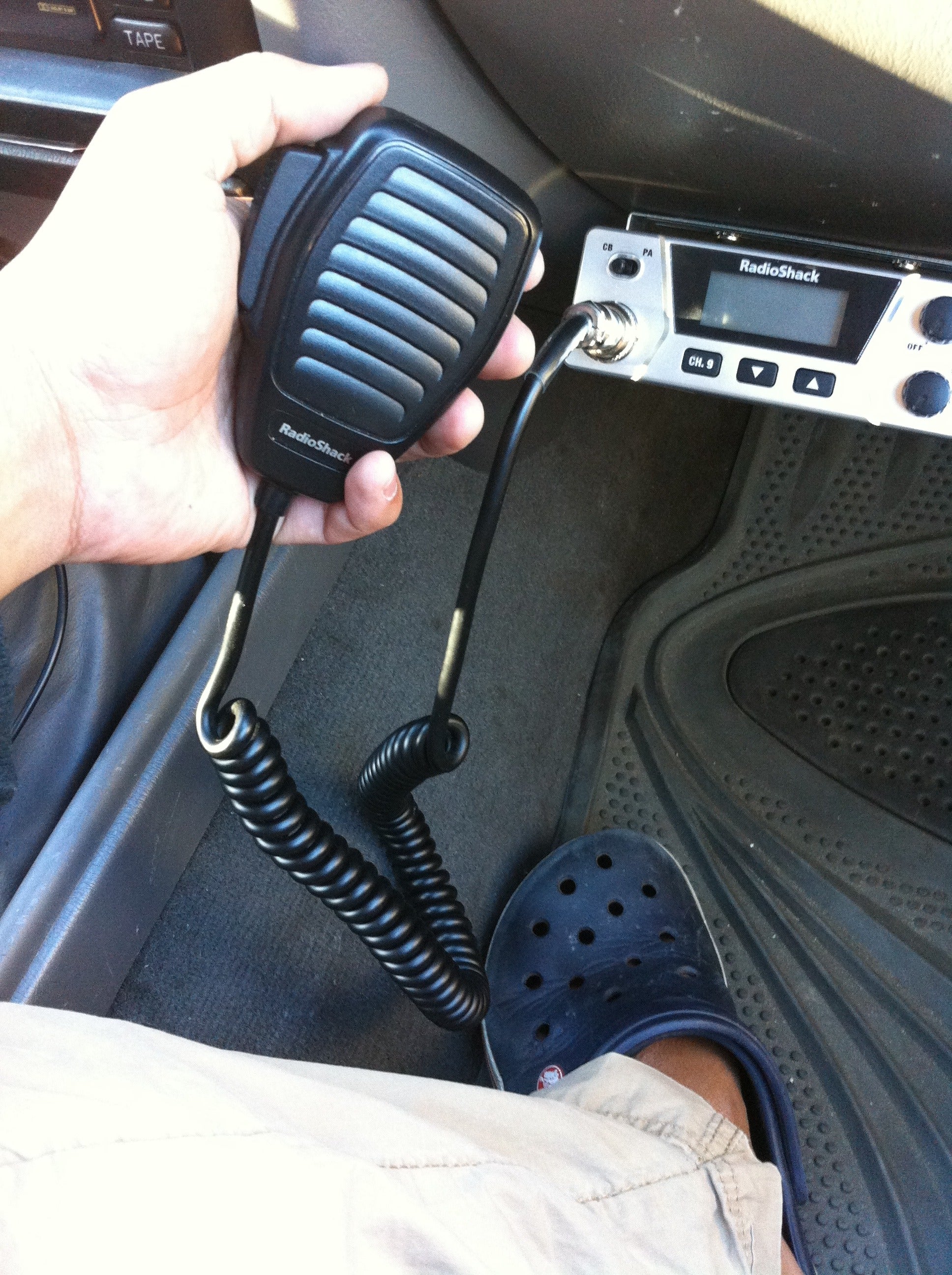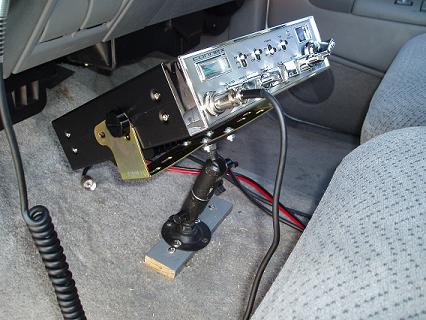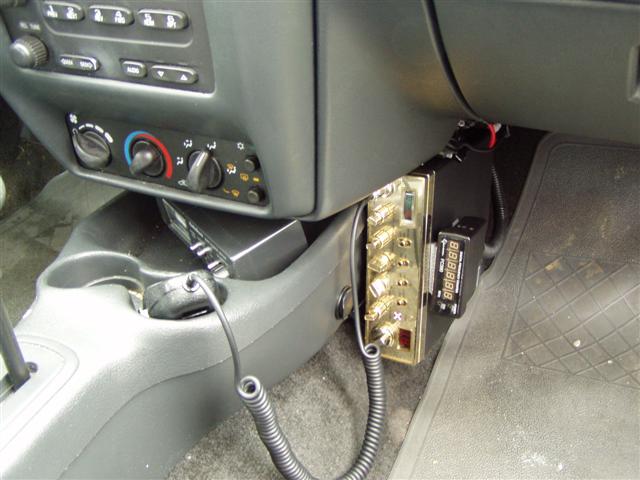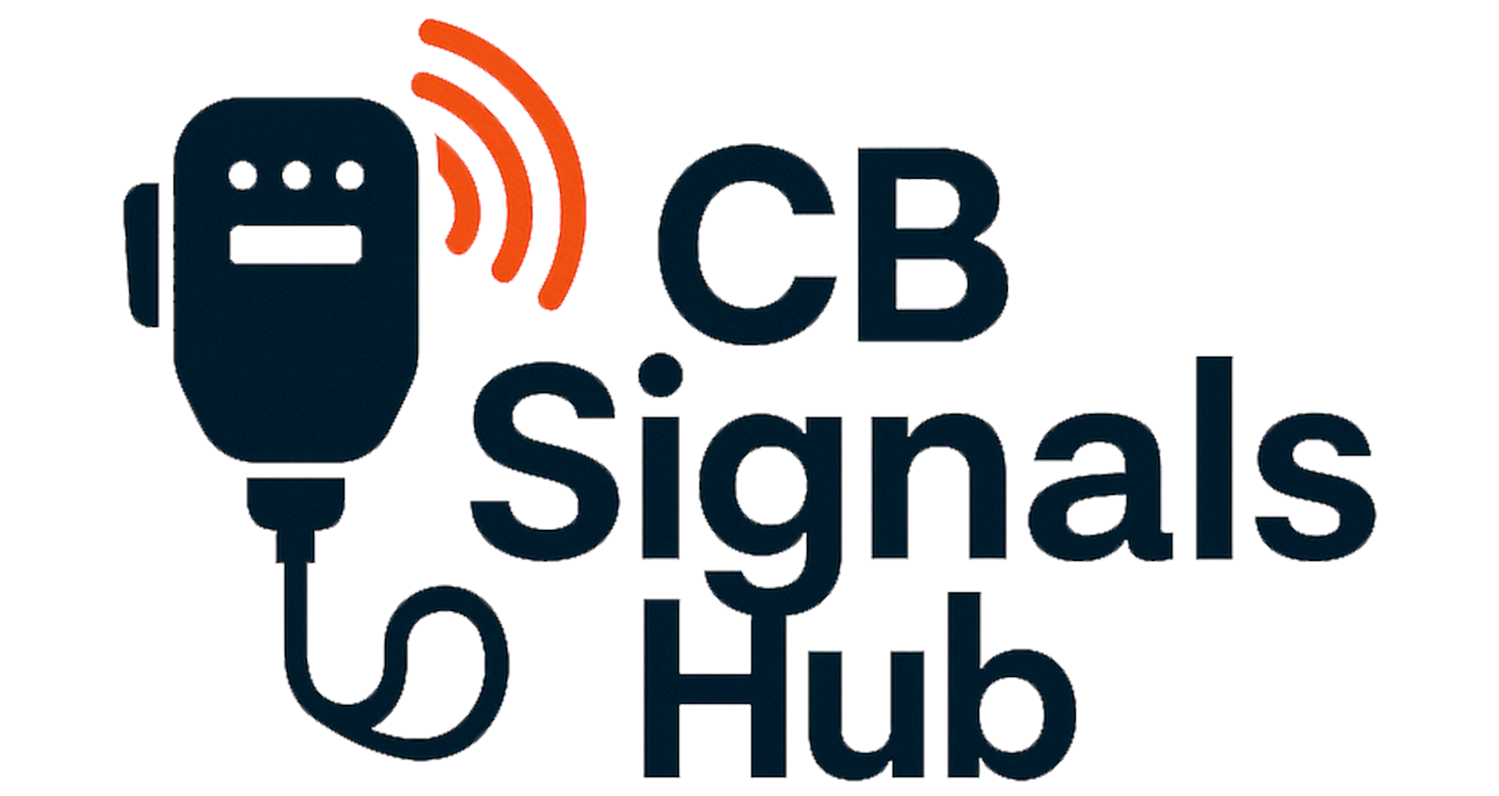How to Install CB Radio in Car: A Step-by-Step Guide

Installing a CB radio in your car is easier than you think. With the right tools and steps, you can set it up quickly.
Citizens Band (CB) radios are great for communication on the road. Whether you’re on a long trip or just want to stay connected, a CB radio can be very useful. In this guide, we will walk you through the steps to install a CB radio in your car.
From choosing the right spot to connecting the wires, we cover everything. By the end, you’ll have your CB radio up and running, ready for your next adventure. Let’s get started!
Choosing The Right Cb Radio
Choosing the right CB radio for your car is crucial. The right radio ensures clear communication and fits well in your vehicle. With many options available, making a decision can seem tough. This section will guide you through the types of CB radios and important features to consider.
Types Of Cb Radios
There are four main types of CB radios. Each type has its unique benefits.
Handheld CB Radios: These are portable and easy to use. They are perfect for those who need a radio on the go. Handheld radios are small and can be carried around easily.
Mobile CB Radios: These are the most common for cars. They are mounted inside the vehicle. Mobile radios offer good range and are easy to install.
All-in-One CB Radios: These combine a CB radio with other functions. For example, some have built-in weather alerts. They save space and provide multiple features in one device.
Base Station CB Radios: These are larger and used in a fixed location. They offer the best range but are not suitable for cars.
Features To Consider
When choosing a CB radio, consider the following features. These will help you pick the best one for your needs.
Channel Scanning: This feature allows the radio to scan through all channels. It stops on a channel with activity. This helps find conversations quickly.
Weather Channels: Some radios offer weather channels. They provide real-time weather updates. This is helpful for long trips.
RF Gain: RF Gain controls the receiver’s sensitivity. It helps to reduce background noise and improve signal clarity.
PA Capability: PA or Public Address capability allows the radio to be used as a loudspeaker. This is useful in emergencies.
Instant Channel 9/19: These buttons provide quick access to emergency (Channel 9) and information (Channel 19) channels. They are useful for fast communication.
Squelch Control: This feature reduces static and improves sound quality. It makes listening more pleasant.

Credit: cbradiomagazine.com
Gathering Necessary Tools
Installing a CB radio in your car can be a fun and rewarding experience. The first step is gathering the necessary tools. Having the right tools on hand will make the installation process smoother and more enjoyable.
Basic Tools Required
First, let’s talk about the basic tools you’ll need. A screwdriver is essential. You’ll use it to remove panels and secure the radio in place.
Next, get a wire stripper. You’ll need it to prepare the wires for connection. This tool ensures you have a clean and safe connection.
Additionally, you’ll need electrical tape. It helps secure the wires and prevent any short circuits. Make sure you have enough tape to cover all your connections.
Also, a power drill can be useful. It allows you to make precise holes if needed. This is particularly handy if you need to mount the radio in a specific spot.
Optional Tools
There are some optional tools that can make the installation process even easier. A multimeter is one of them. It helps you check the voltage and ensure your connections are correct.
Another helpful tool is a coaxial cable stripper. This tool makes it easier to prepare the antenna cable. It ensures a better connection and improves performance.
Finally, consider having a soldering iron. It’s not always necessary, but it can provide a more secure connection. This is particularly useful for those who want a long-lasting installation.
Have you ever struggled with a DIY project because you didn’t have the right tools? Having the right tools on hand can make a huge difference. It saves time and frustration.
Take the time to gather these tools before starting your CB radio installation. It’s a small step that can lead to a big payoff. Enjoy the process and the satisfaction of a job well done!
Preparing Your Car
Installing a CB radio in your car can be a rewarding project. It enhances communication, especially during road trips or in remote areas. Before you start, proper preparation of your car is key. This ensures a smooth and successful installation.
Finding The Best Location
Choose a spot for your CB radio that’s easy to reach. You should be able to operate it without taking your eyes off the road. Popular locations include under the dashboard or on the center console. Ensure the spot has enough space for the radio and its components. Consider the placement of the microphone and speaker too. Avoid areas that may interfere with driving or other electronics.
Ensuring Power Accessibility
Your CB radio needs a stable power source. Find a power point close to your chosen location. Most CB radios connect to the car’s battery or fuse box. Check if your car has an unused fuse slot. This can be a convenient power source. Use a multimeter to ensure the power source is stable and suitable.
Run the power cable neatly through your car. Avoid placing the cable near moving parts or hot surfaces. Secure the cable with zip ties or clips to prevent it from hanging loose. This keeps your installation tidy and safe.
Mounting The Cb Radio
Mounting the CB radio in your car is a crucial step. It ensures easy access and visibility while driving. There are two common methods for mounting: dashboard mounting and under-dashboard mounting. Each has its benefits depending on your car’s layout and your preferences.
Dashboard Mounting
Dashboard mounting places the CB radio on your car’s dashboard. This method offers easy access and visibility. Start by choosing a spot that does not obstruct your view. The middle of the dashboard is usually a good choice.
Next, use a mounting bracket to secure the radio. Most CB radios come with a bracket and screws. Attach the bracket to the chosen spot using the screws. Ensure it is firmly in place. Then, slide the CB radio into the bracket until it clicks.
Connect the power cables to your car’s electrical system. Most CB radios have a power cable that connects to the car battery. Follow the manufacturer’s instructions for this step. Finally, attach the antenna cable to the radio. Your CB radio is now securely mounted on the dashboard.
Under-dashboard Mounting
Under-dashboard mounting places the CB radio below the dashboard. This method keeps the radio out of direct sight. It can help reduce clutter on the dashboard. Choose a spot under the dashboard that is easy to reach.
Use a mounting bracket to secure the radio in place. Most CB radios come with a bracket and screws. Attach the bracket to the chosen spot using the screws. Ensure it is firmly in place. Then, slide the CB radio into the bracket until it clicks.
Connect the power cables to your car’s electrical system. Most CB radios have a power cable that connects to the car battery. Follow the manufacturer’s instructions for this step. Finally, attach the antenna cable to the radio. Your CB radio is now securely mounted under the dashboard.
Connecting The Power Supply
Connecting the power supply to your CB radio is a crucial step in the installation process. This step ensures your radio gets the juice it needs to operate effectively. You have two main options for connecting the power: directly to the battery or through the fuse box. Both methods have their own set of advantages and considerations.
Direct Battery Connection
Connecting your CB radio directly to the battery offers a stable power source. This method ensures that your radio receives consistent voltage without interference from other car electronics. To do this, you’ll need to run a power wire from the battery to the location of your CB radio.
- First, disconnect the negative terminal of the battery to ensure safety.
- Next, attach an in-line fuse holder to the power wire. This fuse will protect your radio from power surges.
- Connect the power wire to the positive terminal of the battery and route it through the firewall into the car’s interior.
- Finally, attach the wire to the power input on the back of your CB radio.
This method may require drilling a small hole in the firewall, so make sure to seal it properly to prevent water and fumes from entering the cabin.
Fuse Box Connection
Connecting your CB radio to the fuse box is another efficient way to power your device. This method can be more convenient as it often eliminates the need for running wires through the firewall. However, it requires understanding your car’s fuse layout.
- Identify a fuse in your fuse box that turns on and off with the ignition. This ensures your CB radio powers down when the car is off.
- Use a fuse tap to connect the power wire to the chosen fuse slot. This device allows you to add a new circuit without cutting any wires.
- Attach the other end of the power wire to the power input on the back of your CB radio.
- Make sure to ground the radio properly to avoid any electrical issues.
Connecting to the fuse box can keep your installation neat and tidy. However, make sure you are not overloading a circuit, as this can cause electrical problems.
Whichever method you choose, ensure that all connections are secure and insulated. A loose wire can cause intermittent power issues or even damage your CB radio. What method do you find more convenient for your setup?
Installing The Antenna
Installing the antenna is a crucial step in setting up your CB radio. The antenna ensures your radio can send and receive signals efficiently. This section will guide you through the different types of antennas and the best places to install them.
Antenna Types
There are various types of antennas available for CB radios. The most common types include magnetic mount antennas, fiberglass antennas, and whip antennas. Each type has its unique features and benefits.
Magnetic mount antennas are easy to install and remove. They are ideal for temporary setups. Fiberglass antennas are durable and suitable for harsh conditions. Whip antennas provide excellent performance and range.
Antenna Placement
Choosing the right placement for your antenna is vital. The location affects your signal strength and quality. The best places to install an antenna are on the roof, trunk, or bumper of your car.
The roof is the optimal spot because it offers the highest point. This placement ensures the best signal reception. The trunk is also a good option, especially for magnetic mount antennas. Bumper placements are less common but can be effective in some cases.
Ensure the antenna is free from obstructions. Avoid placing it near metal objects that can interfere with the signal. Proper placement enhances your CB radio’s performance.
Tuning The Cb Radio
Tuning your CB radio ensures clear communication. It reduces static and interference. Proper tuning is vital for optimal performance.
Swr Meter Usage
An SWR meter measures the standing wave ratio. It shows how well your antenna is tuned. Connect the SWR meter between the radio and the antenna. Turn on the CB radio. Set the meter to the “Forward” position. Key the microphone and note the reading. Switch the meter to “Reflected.” Key the mic again and record the reading. Compare the two readings. A lower reading means better performance.
Adjusting The Antenna
Adjusting the antenna improves signal strength. Start by loosening the antenna mount. Raise or lower the antenna in small increments. Check the SWR reading after each adjustment. Aim for a reading below 2:1. Tighten the mount once you achieve the best reading. This fine-tuning enhances communication clarity.

Credit: www.wearecb.com
Testing The Setup
After installing your CB radio, testing the setup is crucial. This ensures everything works correctly. Let’s walk through the steps of testing your CB radio.
Initial Power-on
First, turn on your car’s ignition. This powers the CB radio. Check the radio display for any signs of life. If the display lights up, you’re off to a good start. If not, inspect the connections. Ensure the power cable is secure. Also, check the fuse. A blown fuse can prevent the radio from powering up.
Making A Test Transmission
Next, it’s time to make a test transmission. Tune to an unused channel. Press the microphone button and speak clearly. Say something simple like “Test, one, two, three.” Release the button and listen. You should hear your voice play back. If the transmission is clear, your setup is good. If not, check the antenna connection. Ensure it is firmly in place.
Also, adjust the squelch control. This reduces background noise. Turn it until the noise stops. Then, try transmitting again. Clear communication is key for a successful setup.
Troubleshooting Common Issues
Installing a CB radio in your car can be a rewarding project, but it doesn’t always go smoothly. Even the best installations can run into some common issues. Here’s how to troubleshoot and fix them.
Poor Reception
Poor reception can be frustrating. First, check your antenna. Is it properly mounted and free of damage? A broken or poorly mounted antenna can severely impact reception.
Ensure your coaxial cable is not damaged. A damaged cable can cause signal loss. Replace it if you see any signs of wear.
Another simple fix is to make sure your radio’s squelch setting is adjusted correctly. Set the squelch to the point where the background noise just disappears.
Interference Problems
Interference can come from various sources. Start by checking your car’s electrical system. Bad grounding can cause interference. Ensure your radio and antenna are properly grounded.
Electrical devices in your car can also cause interference. Items like phone chargers or LED lights can disrupt your signal. Try turning off these devices one by one to identify the culprit.
Lastly, consider using a noise filter. If you’ve tried everything else, a noise filter can help reduce interference from your car’s electrical system.
Have you faced these issues before? What worked for you? Share your experiences in the comments below!

Credit: cbradiomagazine.com
Frequently Asked Questions
Can I Put A Cb Radio In My Car?
Yes, you can install a CB radio in your car. Ensure the antenna is properly mounted for optimal performance.
Can You Plug A Cb Radio Into A Cigarette Lighter?
Yes, you can plug a CB radio into a cigarette lighter. Ensure the radio’s power requirements match the lighter’s output.
Where Is The Best Place To Mount A Cb Antenna?
Mount a CB antenna on the vehicle’s roof for optimal performance. The roof provides the best ground plane and signal reception.
Do Truckers Still Use Cb Radios?
Yes, truckers still use CB radios. CB radios provide reliable communication, especially in areas with poor cell phone reception.
Conclusion
Installing a CB radio in your car is straightforward. Gather your tools first. Make sure you have the right cables and mounts. Follow the steps carefully. Connect the power and antenna properly. Test the radio to ensure it’s working. Adjust settings for clear communication.
You can enjoy better communication on the road. Remember, safety is important. Check local laws for CB radio use. Now you’re ready for your road adventures. Have fun and drive safely! Engaging with other drivers can be useful. Stay connected while you travel.
